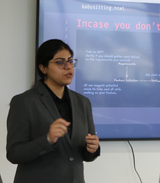Fixing a bug vs fixing a feature
The Art of Fixing the Wrong Thing the Right Way

General opinion:
Some bugs are easy to fix.
A crash here, a bad input there - patch it, ship it, move on.
Alternate opinion:
But what if the same bug keeps coming back?
Not exactly the same line of code, but the same kind of failure over and over. Maybe you’re patching a feature that never worked right.
Why fixing bugs feels good
Bugs are obvious.
They break something in a way you can see — a crash, a failed request, an error in the logs.
You can point to them, write a fix, test it, and feel done.
It’s clear work. It’s progress you can measure.
But features can be quietly broken
Not all problems are this obvious. Sometimes the product doesn’t crash, but it’s harder to use. It adds extra steps or relies on assumptions that no one remembers making. It might silently return incorrect data or behave inconsistently.
These aren’t bugs in the traditional sense; they’re flaws in how the feature was designed or implemented, or just appeared because things were to be shipped fast.
The two ways of working on your product
To understand the difference, let's see both on the the Effort on coding work against the Impact on product progress.
- Bug Fixing Path (Maintenance): This path involves quickly patching visible issues to keep the product alive and stable. It appears as a relatively flat line starting from low effort and low impact, moving slightly upward as each bug fix improves stability incrementally. It’s necessary maintenance that keeps your system running, but often doesn't move the product forward significantly. Since most of the time goes it patching something that just broke, it consumes much of the time your product needs.
- Feature Fixing Path (Innovation): This path starts similarly, with early flaws and repeated problems, but instead of patching symptoms, it requires deeper changes to the feature itself. This path curves steeply upwards, indicating higher impact on the product but usually involving greater effort and thoughtful redesign. Fixing features means addressing root causes and assumptions embedded in the product, so that existing things keep on working themselves. You get time to work on something new.

Why we keep patching instead of fixing
When a bug appears, we naturally try to fix it quickly. We add checks, retries, and fallbacks. These fixes deal with symptoms, not root causes.
What we rarely do is ask why the issue exists at all.
Why is this input even allowed?
Why does this flow behave this way?
Who decided it should work like this?
Often, the answer is “no one really knows,” or “we shipped it this way and never came back”. The result? A feature shipped with quick fixes instead of thoughtful changes.
The problem goes beyond code
You might eliminate crashes, but the behavior still feels off. The code looks fine, but the user experience remains confusing or unreliable. You’re facing something bigger than a bug – assumptions and decisions embedded deep within the product and its team.
How to decide when to fix the feature
If you see the same failure repeatedly, it’s time to pause and think. If no one can explain why the feature works as it does, or if every patch makes the flow more complicated, it’s a sign the problem runs deeper.
Fix the bug when:
- The feature is well-founded.
- The failure is new or rare.
- The fix is clear and contained.
Fix the feature when:
- The same problem resurfaces frequently.
- The reason behind the behavior is unclear.
- Fixes increase complexity instead of reducing it.
What to do when you can’t fix the feature yet
Not every feature flaw can be fixed immediately. Deadlines and priorities often get in the way. But you can prepare for the future by:
- Logging failures clearly to capture recurring patterns.
- Writing tests to cover known edge cases.
- Adding checks that force you to notice when something is wrong.
- Set forced code standards and feature delivery requirements that manage quality without human intervention.
The objective is to make the problem impossible to ignore next time.
Fixing bugs keeps you running. Fixing features moves you forward.
Fixing bugs is maintenance. It keeps your system alive, which is important too. Fixing features is progress – it makes your product better.
If the same kind of bug keeps coming back, stop and ask: Are you fixing the symptom or the cause? Sometimes, it’s time to rethink what you’re building, not just how you’re patching it.




